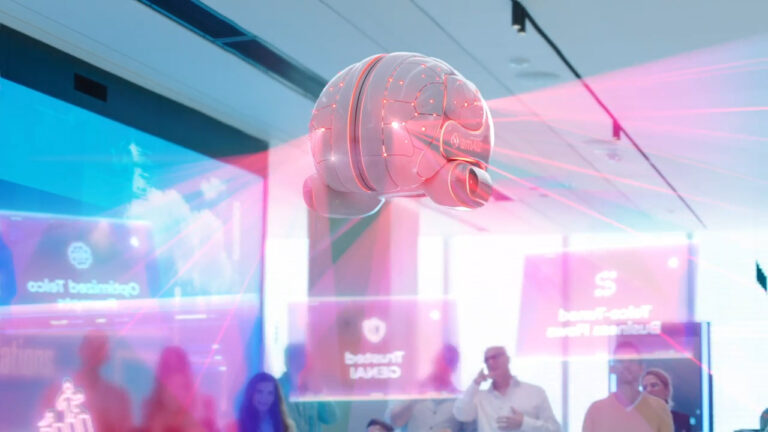Meet Media.Monks’ Wormhole, an alien-like, conversational robot with a quirky personality and the ability to offer keen marketing expertise. Lewis Smithingham, senior vice president of innovation and special ops at Media.Monks, a global marketing and advertising company, discusses the creation of Wormhole and AI’s potential to enhance media and entertainment with host Noah Kravitz in
Read Article
 In our previous exploration of graph analytics, we uncovered the transformative power of GPU-CPU fusion using NVIDIA cuGraph. Building upon those insights, we…
In our previous exploration of graph analytics, we uncovered the transformative power of GPU-CPU fusion using NVIDIA cuGraph. Building upon those insights, we…
In our previous exploration of graph analytics, we uncovered the transformative power of GPU-CPU fusion using NVIDIA cuGraph. Building upon those insights, we now introduce a revolutionary new architecture that redefines the boundaries of graph processing. During our earlier foray into graph analytics, we faced various challenges with the architecture we utilized. While effective…
Gear up, Trailblazers — Honkai: Star Rail lands on GeForce NOW this week, along with an in-game reward for members to celebrate the title’s launch in the cloud. Stream it today, along with five new games joining the GeForce NOW library of more than 1,900 titles this week. Five Stars Take a galactic journey in
Read Article
 In the fast-evolving landscape of generative AI, the demand for accelerated inference speed remains a pressing concern. With the exponential growth in model…
In the fast-evolving landscape of generative AI, the demand for accelerated inference speed remains a pressing concern. With the exponential growth in model…
In the fast-evolving landscape of generative AI, the demand for accelerated inference speed remains a pressing concern. With the exponential growth in model size and complexity, the need to swiftly produce results to serve numerous users simultaneously continues to grow. The NVIDIA platform stands at the forefront of this endeavor, delivering perpetual performance leaps through innovations across…
 Telecommunications companies (telcos) are leveraging generative AI to increase employee productivity by automating processes, improving customer experiences,…
Telecommunications companies (telcos) are leveraging generative AI to increase employee productivity by automating processes, improving customer experiences,…
Telecommunications companies (telcos) are leveraging generative AI to increase employee productivity by automating processes, improving customer experiences, and optimizing network operations. Amdocs, a leading provider of software and services for communications and media providers, built amAIz, a domain-specific generative AI platform for telcos as an open, secure, cost-effective…
Now’s the time to hop aboard AI, NVIDIA founder and CEO Jensen Huang declared Wednesday as ServiceNow unveiled a demo of futuristic AI avatars together with NVIDIA during a keynote at the Knowledge 24 conference in Las Vegas. “If something is moving a million times faster every 10 years, what should you do?” Huang asked,
Read Article
 When it comes to perception for Intelligent Video Analytics (IVA) applications such as traffic monitoring, warehouse safety, and retail shopper analytics, one…
When it comes to perception for Intelligent Video Analytics (IVA) applications such as traffic monitoring, warehouse safety, and retail shopper analytics, one…
When it comes to perception for Intelligent Video Analytics (IVA) applications such as traffic monitoring, warehouse safety, and retail shopper analytics, one of the biggest challenges is occlusions. People may move behind structural obstacles, retail shoppers may not be fully visible due to shelving units, and cars may be hidden behind large trucks, for example. This post explains how the…
 Retrieval-augmented generation (RAG) is a technique that combines information retrieval with a set of carefully designed system prompts to provide more…
Retrieval-augmented generation (RAG) is a technique that combines information retrieval with a set of carefully designed system prompts to provide more…
Retrieval-augmented generation (RAG) is a technique that combines information retrieval with a set of carefully designed system prompts to provide more accurate, up-to-date, and contextually relevant responses from large language models (LLMs). By incorporating data from various sources such as relational databases, unstructured document repositories, internet data streams, and media news feeds…
Amid an AI revolution sweeping through trillion-dollar industries worldwide, NVIDIA founder and CEO Jensen Huang will deliver a keynote address ahead of COMPUTEX 2024, in Taipei, outlining what’s next for the AI ecosystem. Slated for June 2 at the National Taiwan University Sports Center, the address kicks off before the COMPUTEX trade show scheduled to
Read Article
AI tools accelerated by NVIDIA RTX have made it easier than ever to edit and work with video.
